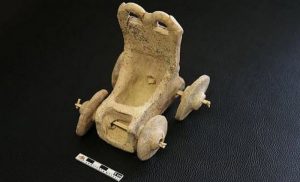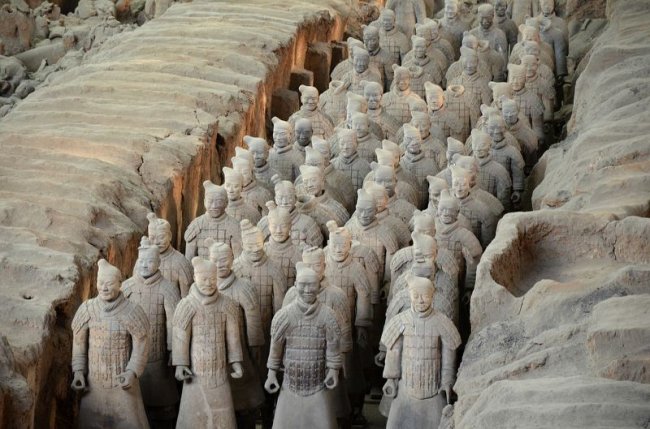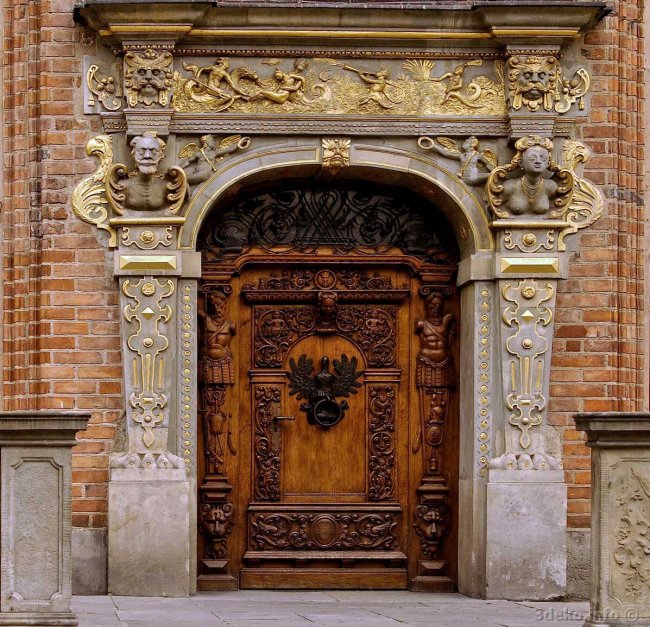Primitive thongs, wigging pillow and other ancient things that have survived.
 In the daily arsenal of modern man there are a lot of various inventions that make his life much easier. And few people think that many of these things appeared in one form or another several thousand years ago. Of course, they looked somewhat different, but the functions were performed by all the same as today.
In the daily arsenal of modern man there are a lot of various inventions that make his life much easier. And few people think that many of these things appeared in one form or another several thousand years ago. Of course, they looked somewhat different, but the functions were performed by all the same as today.
1. Greenland Fur Thong
The clothes were rather “modest” throughout history. But it turns out that modern thongs have existed for a surprisingly long time, and the Greenland Inuits have been wearing them for several hundred years. “Naatsit” are traditional thongs, but made of … leather and fur, and sewn with whale tendons or yarn of deerskin. They were usually decorated with beads and worn as underwear for both men and women.
2. Sacred Twenty Cube
Cubes have been around for ages. But the Metropolitan Museum has the world’s oldest 20-sided dice from Egypt, dating from the Ptolemies period (more than 2,000 years old). About him, little is known, except for the fact that the cube has a height of 2.5 cm, made of serpentine (a stone with serpentine spots) and that Greek letters are inscribed on its face.
The history of the artifact can be traced only in the last 100 years, when Reverend Chaunce Murch acquired it, performing missionary work in Egypt. But it is unlikely that the ancient artisans created it for desktop RPG or even gambling. Most likely, the cube was used for divination or ritual ceremonies.
3. Bedding and mosquito repellent
According to the antique “beds” found in South Africa, the “cavemen” were much more creative than they used to be considered. Archaeologists have discovered 77,000-year-old mattresses on the site of Shibudu in a cave carved into sandy rocks. These mattresses were made from at least 15 layers of medicinal plants, including sedge and reeds. In particular, people gathered river wild quince, known for its mosquito repellent properties. Sibudu mattresses are 50,000 years older than the oldest bedding, and surprisingly comfortable because they were made 30 centimeters thick and constantly updated the plants.
4. Cyprus Opium Jugs
The ancients used a variety of drugs common to their region. The inhabitants of the “Fertile Crescent” made alcohol, and the Mesoamericans preferred psychoactive plants. Recently, scientists have discovered the first evidence of drug use in the Middle East. In a traditionally conservative region, researchers have discovered a significant area, where mass produced ritual drugs and drugs, including opium substances. The opium was kept in jugs. Researchers have discovered these pitchers at local religious sites, as well as in fairly remote Levant and Egypt (i.e., 4,000 years ago, opium was traded).
5. Ancient Egyptian hair extensions
The Egyptians considered hair as a status symbol, so it is not surprising that they invented hair extensions, as well as gels, to look as good as possible, both in life and after death. The recovered 3300-year-old corpse from Amarna had “a very complex hairstyle of about 70 braids” attached to different parts of the head. Archaeologists have found many other Egyptian bodies with hair extensions that have been preserved quite well. Similarly, a study of eighteen 3,500-year-old mummies aged 4 to 58 years showed that nine of them had traces of fatty solution, i.e. gel.
6. Ancient Bubble Wrap from Plants
In 2014, archaeologists discovered Roman bronze pots in Wiltshire, England. Unique to this treasure was the dried organic matter found around them. It turns out that 1500-year-old pots were wrapped in the oldest bubble wrap in history, which was made from … plants. Pollen analysis revealed a mixture of bracken, cornflowers and other endemic plants and flowers, including clover and buttercup. Also for the remains of the plants was able to set the date. Researchers believe that the pots were buried V – VI centuries.
7. Symbolic ceramics of urine
The Moche ethnic group living in northern Peru to the Incas existed for 700 years before it disappeared for mysterious (possibly ecological) reasons. In addition to temples, tombs and irrigation canals, Moche was left behind a collection of the most beautiful and most bizarre pre-Columbian ceramics. And what is most interesting, they did not even have a potter’s wheel.



